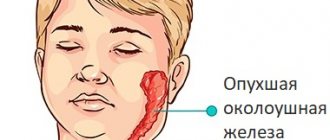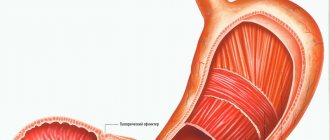A benign infectious disease with a cyclic course, which belongs to alimentary hepatitis, is called hepatitis A. The symptoms of this disease can be noted as follows: simultaneous enlargement of the liver and spleen (hepatosplenomegaly) and the phenomenon of intoxication of the body. Hepatitis type A is also characterized by icteric discoloration of the skin and mucous membranes.
Therefore, when they ask hepatitis, what is it? You can hear the answer - jaundice. Also, the majority of the population knows that the second name of the disease is Botkin’s disease. It was Botkin who classified the so-called “catarrhal jaundice” as a viral disease. Since then the name has stuck.
Hepatitis A is an intestinal infectious disease, after which a stable immunity with high tension is formed (that is, with a high level of immunity to the pathogen that caused this disease). Children aged 2-14 years are most sensitive to the pathogen. If the patient has suffered an erased or asymptomatic form of the disease, post-infectious immunity will be less strained. The disease is widespread. In short, here's what hepatitis A is. What causes and how is hepatitis type A transmitted?
Types of hepatitis in children
Infecting a child with hepatitis is possible, first of all, when viruses penetrate his body. However, changes in liver function also occur under the influence of certain diseases, due to exposure to toxic substances or the presence of congenital pathologies. Liver lesions according to the form and causes of childhood diseases are traditionally divided into the following types:
- Viral hepatitis. This type of disease is caused by infection of the patient with the hepatitis virus, which has an initial acute form;
- Chronic hepatitis. The infection lasts more than 6 months and can lead to irreversible consequences, for example, cirrhosis of the liver.
The cause of chronic diseases can be congenital pathologies (metabolic disorders), viruses (most often hepatitis of groups “B” and “C”, Epstein-Barr), toxic substances entering the body, radiation infection, a reaction to a number of medications or cystic fibrosis.
Diagnostics
In order to make a correct diagnosis you should:
- First, an epidemiological analysis is carried out, that is, factors that could provoke infections are determined, such as water, food and possible contacts with sick people
- the entire overall picture of symptoms is taken into account, namely: intoxication is analyzed, as well as the presence of disorders of the gastrointestinal system
- the first “swallows” of jaundice are determined, because the sclera changes color very first
- the liver is palpable to the touch, which makes it possible to determine a possible enlargement
- but the most important are laboratory tests, such as a general urine test, as well as biochemical blood tests; markers of viral hepatitis are determined
- if there are antibodies to this type of hepatitis, with increased levels of liver enzymes ALT and AST
It would be a good idea to seek advice from an infectious disease specialist, hepatologist, or epidemiologist.
Causes of hepatitis in a child
A child can acquire a viral infection of the liver at the earliest stages of life - during fetal development, birth and during the first months of life.
Babies are sometimes infected with the hepatitis B virus while in the womb. The mother may be a chronic carrier of this type of hepatitis or become ill with it during late pregnancy. Infection is also possible during birth contacts due to the simultaneous appearance of injuries on the mucous membranes of mother and baby.
The liver of the fetus and newborn can be damaged by fetal hepatitis. with rubella , chickenpox or syphilis while pregnant
Children become infected with hepatitis C during fetal development or during childbirth. The presence of a chronic form of the virus in a pregnant woman can lead to slower development of the fetus or the birth of a child prematurely . According to WHO, hepatitis is transmitted through the placenta from mother to baby in only 3% of cases. Therefore, the most common routes of infection are passage through the birth canal and breastfeeding . With it, infection is possible through unhealed cracks in the nipples and ulcers or abrasions in the child’s mouth.
After the birth of a healthy baby without infections in the form of hepatitis, parents should not relax. Like an adult, a child can receive viruses type “B” and “C” through blood transfusions, punctures and injections with non-sterile instruments. Parents need to be careful both when following these procedures and when monitoring their children’s compliance with basic hygiene measures - washing dirty hands before eating. Because the most common type is, of course, hepatitis A, the virus of which enters the child’s body through the oral cavity. Dirty hands, toys and other household items that contain this type of infection become direct sources of infection.
The causative agent of the well-known jaundice , Botkin's disease, is the same hepatitis A. It can be transmitted to a child through household contact with a carrier of the virus or enter the digestive tract through the fecal-oral route. Any secretions of a sick person carry an infection in the form of hepatitis A; its molecules are resistant to environmental influences: it is not afraid of ultraviolet radiation, many chemicals and survives at a temperature of +60°C for half an hour.
Advertisement
Mechanism of disease development
Botkin's disease is characterized by a gradual development. During the typical icteric form of the disease, the following five stages are distinguished:
| Period of illness | Duration | Clinical picture |
| Incubation | 7-50 days | No symptoms |
| Preicteric | 2-4 weeks | It can occur in flu-like, asthenovegetative, gastric or arthralgic type. |
| Icteric | From 2 weeks to 1.5 months | Characterized by a rapid increase in jaundice. |
| Recovery period | From 1 week to six months | The jaundice goes away, the size of the liver returns to normal. |
Symptoms of hepatitis in children
The liver of any person performs one of the many functions useful to the body - active neutralization and complete removal of harmful substances from it. Its cells, with the help of bile, transform all decay products into harmless ones, including converting the hemoglobin it wastes into bilirubin, which enters the intestines and is excreted. The liver is involved in all types of metabolic processes in the body.
A component of bile, bilirubin, has a yellow-brown color, which affects the normal color of the child’s stool. When the liver is damaged, it is not excreted from the body, accumulates and begins to enter the blood. This explains the main symptoms of hepatitis in children.
- Yellow color of the skin, nails and sclera (whites) of the eyes due to a large amount of bilirubin in the blood. Blood clotting changes due to changes in the chemical composition, and the patient’s bleeding increases;
- Light-colored stool (“white” stool) due to the inability of the liver to perform the function of detoxifying the body;
- Brown color of urine due to the fact that the kidneys begin to take over the elimination of bilirubin;
- Disruption of digestive processes: bitterness may appear in the child’s mouth, sometimes vomiting , flatulence are observed, and persistent heartburn .
- Loss of strength and weakness due to general intoxication of the body.
During a medical examination, children complain of pain or “heaviness” in the right hypochondrium , and upon palpation the doctor notes an enlarged liver. The acute form of the virus is characterized by a sharp rise in body temperature to 37.5°C, nausea , vomiting, itchy skin and, of course, its obvious yellowness .
With chronic hepatitis, stars from broken blood vessels appear on the child’s body, and the palms turn red. The onset of the disease may be without symptoms or have mild symptoms. Since in this case the process of development of the disease proceeds ahead of schedule for a long time, then over time, all systems of the body undergo changes: the child’s lymph nodes become enlarged, pain in the joints appears, and the functioning of the endocrine system of the body is disrupted. In the liver, instead of its native hepatocyte cells, connective tissue begins to form, which leads to the development of fibrosis.
Characteristics of the disease
Hepatitis A often occurs in children. The most dangerous period is the age from three to seven years. But children under one year of age have transplacental immunity, which is protection.
A person begins to spread the infection, regardless of what form he is sick with (overt or latent), and also if he is simply a carrier of this virus. An epidemic can begin if people do not know about their disease (after all, it does not make itself felt at the initial stage), and they live a normal life, thus spreading the infection.
Patients who are carriers of the virus transmit the disease through feces, urine and blood. Hepatitis A can be detected through a urine test, even before the first symptoms appear. This disease refers to a typical intestinal infection that is spread through household means, as well as through feces, water or food.
But the option of infection by airborne droplets is excluded. Through blood transfusion, the percentage of infection is low.
After all, although the virus is present in the blood, it is unstable. The possibility of infection from mother to child during pregnancy is also excluded.
The child's body is susceptible to such a virus. Epidemics often occur in kindergartens and schools. This happens least often in the summer, and more often in the autumn-spring period. Some people have persistent antibodies to Hepatitis A, but these are very few. And after the illness, immunity is already developed, which will protect against further infection.
Treatment of hepatitis in children
Prescriptions of drugs for viral hepatitis are made by a pediatrician (or gastroenterologist); parents should not treat the child by selecting medications on their own. The doctor may also recommend a diet known as “table No. 5” and outline measures to prevent the disease in the future.
To combat viruses, interferon is used, which increases the body's protective functions, and various immunomodulators. Antiviral drugs based on lamivudine have proven themselves well in the treatment of children.
To remove decay products, sorbents in the form of gels, pastes or activated carbon tablets are prescribed to help children’s livers. The main goal of treatment is the restoration of the diseased organ, therefore hepatoprotectors in the form of drugs or dietary supplements are actively used. In case of stagnation of bile choleretic drugs , often of natural and plant origin; it is recommended to take herbal preparations (artichoke, immortelle, etc.). It is mandatory to take vitamin preparations containing groups B6 and B12, and spirulina, which compensate for the lack of minerals and vitamins in the child’s body.
For chronic hepatitis, you need to consult a hepatologist or infectious disease specialist. Depending on the cause of the disease and the extent of damage to the body, they prescribe appropriate treatment.
Prevention of hepatitis in a child
Parents often wonder how to prevent the onset of the disease. Vaccinations against hepatitis group “B” in the first year of life, and vaccinations against hepatitis group “A” according to epidemic indications, will help protect your baby. Preventive measures include compliance with hygiene standards, proper nutrition, excluding the effect of fatty, fried and spicy foods on the liver . Hardening , physical exercise and an active lifestyle help improve immunity
Childhood hepatitis is most often caused by hepatitis viruses of groups “A”, “B” and “C”; it can occur in an acute form or take the form of a chronic disease. Help in the fight against the disease can be provided to the child and his parents by properly selected treatment, following the doctor’s recommendations and observing measures to prevent liver diseases.
Advertisement
Attention! The use of any medications and dietary supplements, as well as the use of any therapeutic methods, is possible only with the permission of a doctor.











